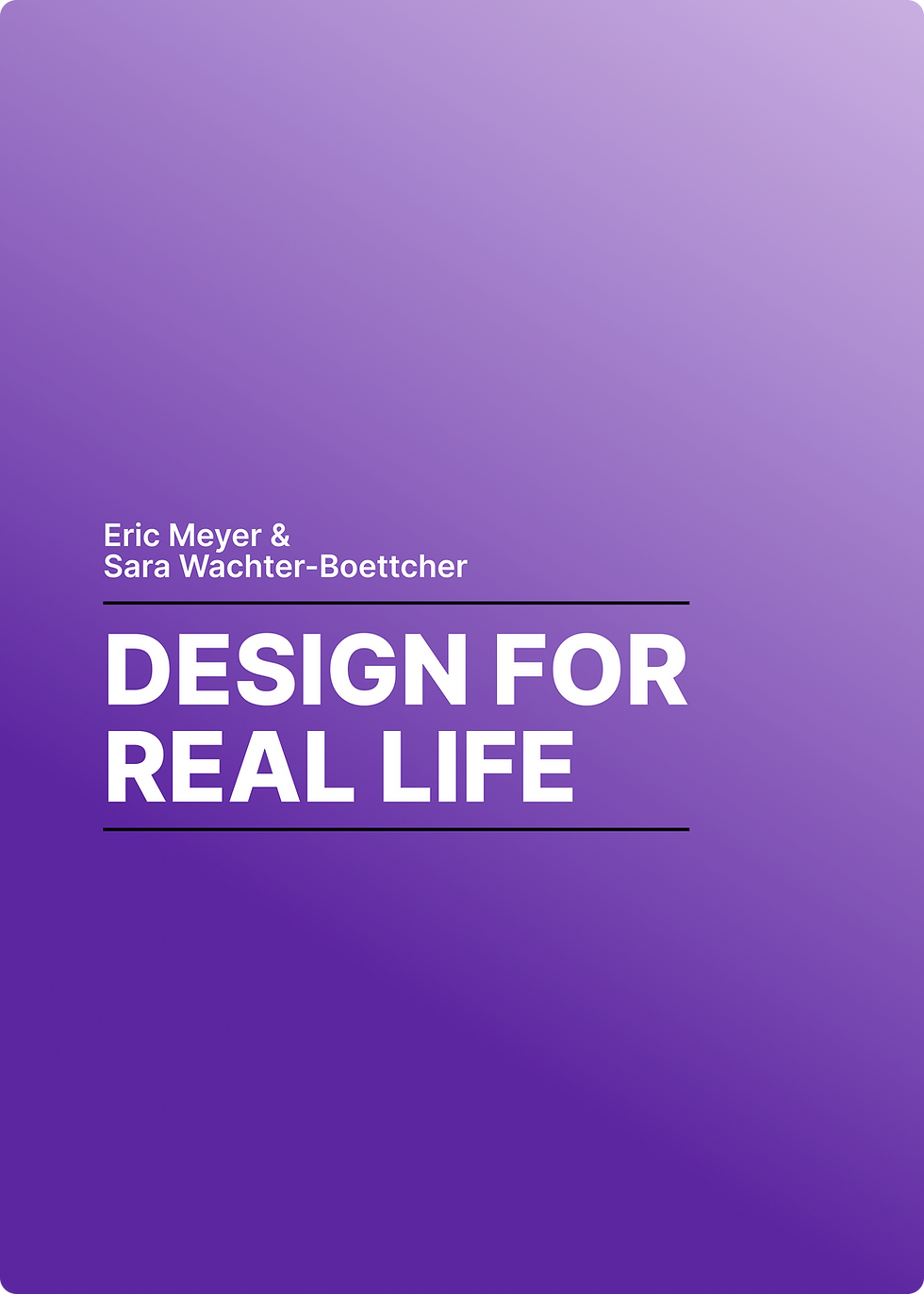Continuously test and iterate
Design with clarity and simplicity
Be inclusive and mindful
Anticipate user needs
Design for real life
About the author
Summary
A website might use A/B testing to compare different design solutions and identify the most effective option.
Why it's important: Testing and iteration are essential for creating experiences that are effective and user-friendly. By continuously testing and refining design solutions, designers can create experiences that are more successful and impactful.
How to implement it: Use a range of testing methods, such as A/B testing and usability testing, to identify areas for improvement in design solutions. Use this information to iterate and refine design solutions, creating experiences that are more effective and user-friendly.
A website might use clear and simple language for instructions and error messages, rather than relying on technical jargon.
Why it's important: Clarity and simplicity are essential for creating experiences that are easy to understand and use. By designing with these principles in mind, designers can create experiences that are more effective and user-friendly.
How to implement it: Use plain language whenever possible and avoid using technical jargon or complex terminology. Use clear and simple language for instructions, labels, and error messages. Design with visual simplicity in mind, avoiding cluttered or overwhelming designs.
A website might include a range of font sizes and styles to accommodate users with visual impairments.
Why it's important: Designing for diverse user groups is essential for creating experiences that are accessible and inclusive for everyone. By being mindful of different user needs and preferences, designers can create experiences that are more user-friendly and welcoming.
How to implement it: Conduct user research to gain insights into the needs and preferences of diverse user groups. Use this information to create design solutions that are accessible and inclusive, such as providing alternative text for non-text content and designing for keyboard accessibility.
A form might include autofill options for frequently entered information, such as a user's name and address.
Why it's important: By anticipating user needs and potential problems, designers can create experiences that are more seamless and efficient. This can also help prevent frustration and errors for users.
How to implement it: Conduct user research and usability testing to identify common user needs and pain points. Use this information to create design solutions that address these needs and prevent potential problems.
A website for a bank might include error messages that acknowledge the fact that people sometimes make mistakes with their finances, rather than blaming or shaming them.
Why it's important: Designing for real life means acknowledging the complex and messy realities of people's lives. By designing with empathy and understanding, designers can create experiences that are more inclusive and effective.
How to implement it: Conduct user research to gain insights into people's real-life experiences and needs. Use this information to inform design decisions and create experiences that are more relatable and relevant.
Anticipate user needs
Anticipate user needs
Design for real life
Be inclusive and mindful
Designers, developers, content strategists, and anyone interested in creating more inclusive and empathetic digital experiences.
Who is it for?
.png)
Design for real life
Design for Real Life explores the importance of empathy in creating inclusive digital experiences. The authors highlight the ways in which technology can often exclude or alienate people due to various factors such as language barriers, disabilities, and socioeconomic status. By focusing on empathy and the understanding of the needs of diverse audiences, designers can create more effective and inclusive experiences that make a positive impact on people's lives.
Eric A. Meyer is a prominent web design consultant and author from the United States. He is best known for his tireless advocacy of web standards, particularly CSS, which he uses to manage HTML display. Eric has authored numerous books and articles on CSS and delivered many presentations to promote its use.
Sara Wachter-Boettcher is a renowned author, consultant, and speaker. She is the author of two influential books: Technically Wrong and Content Everywhere. Along with Eric Meyer, she co-authored Design for Real Life.
Be inclusive and mindful
Continuously test and iterate
Design with clarity and simplicity
Continuously test and iterate
Design with clarity and simplicity
Eric Meyer and Sara Wachter-Boettcher
Design for Real Life
Product design, Accessibility
